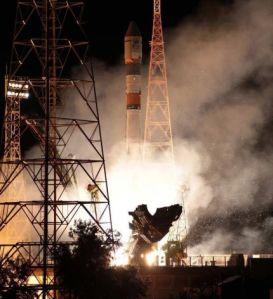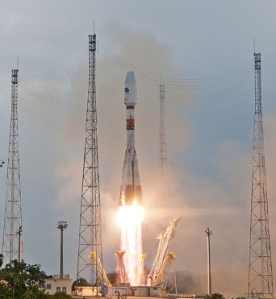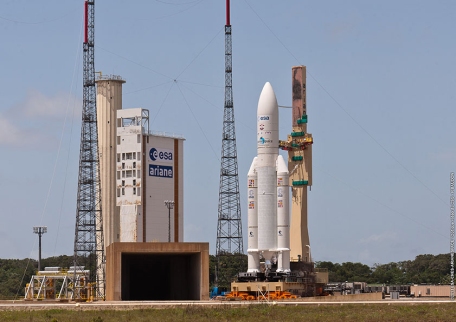
Ariane VI
Credit : ESA
According to a release from the European Space Agency, Europe is one step closer in plans for producing the next generation replacement for the market dominating Ariane V commercial booster. The new booster, dubbed Ariane VI, marks a curious retreat in capabilities from its predecessor, and the wholesale adoption of a business plan which seems totally contingent on the failure of SpaceX and its drive for re-usability.
At issue is the fact that following a Ministerial meeting last year, and at the urging of France, ESA has adopted a mostly solid fuel based design which would see three first stage solid boosters, a solid second stage booster, and finally a cryogenic liquid fueled third stage based on the Ariane V mid-life evolution upper stage engine currently being developed. According to most reports, the reason for the switch to solid propulsion is to allow mass production of the stage segments in an effort to lower costs and reach a “777” goal consisting of a 7 year development time frame, a 7 metric ton capacity to geostationary orbit and $70 million Euro launch costs. Along the way, they hope to avoid adding a fourth 7, as in a seven billion dollar development costs, shooting instead for between four and five billion. Of course, given the cost creep which seems to accompany any large public development project, the Ariane VI might just reach this unwanted milestone anyway.
As critics have pointed out, even if ESA is completely successful in its goals, it would still result in a booster which likely precludes any independent European crew capable launch vehicle for decades to come. Also at risk is the fact that that after the Ariane V is retired, Europe might no longer be in a position to field a more capable booster if it wanted to, whereas a decision to proceed with a liquid fueled booster might have protected this potential. Also, for environmentally sensitive Europe, doubling down on considerably more toxic solid propulsion elements is a curious choice at best. Finally there is this. If SpaceX is successful in achieving even partial re-usability, the $70 million Euro launch cost being pursued will be piteously inadequate for keeping Europe competitive, and any subsequent cost growth would likely drive it further away from other competitors as well.
While Europe’s long term launcher plans may appear to be of limited relevance at the moment, it is important to remember that for any launch development project, time frames almost always stretch out, and major changes such as those being contemplated occur infrequently at best. The fact that what is for the moment the world’s leading commercial launch operation appears to be closing the door, rather than stepping through it and following SpaceX in pursuing re-usability is not an encouraging development for anyone interested in seeing a global expansion in space commerce. If events follow predicable paths, ESA, having gambled on the past and lost, will fight back with the only remaining tool left, governmental intervention to skew the playing field in its favor.









